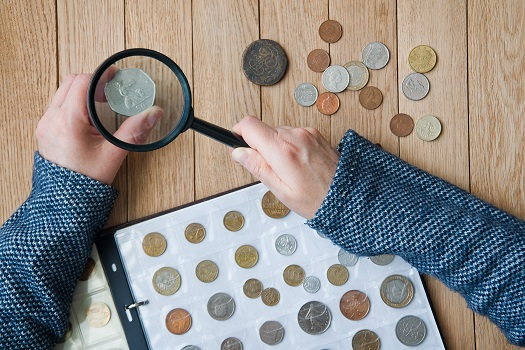Bullion vs. Numismatic Coins: How Are They Different?
From investors to collectors, the world of coins includes a diverse array of people, all with different goals in mind when looking for certain types of coins. Bullion and numismatic coins have different purposes, and their values are defined in different ways. Investable worth and metal content determine the value of bullion coins, whereas collectibility and rarity define numismatic coins. The professionals from First National Bullion and Coin, San Diego gold and bullion dealers with years of experience collectors can trust, offer more details about the difference between these two types of coins.
Investment vs. Collectible
Bullion coins are made of gold, silver, or platinum and are specifically purchased by buyers as long-term investments. They’re considered to be a form of money, an asset with defined value. Numismatic coins, on the other hand, are purchased by collectors for their rarity and historical value and are seen as collectibles. The values of bullion coins, for the most part, remain consistent, but the values of numismatic coins are dependent on several factors, such as historical and artistic significance.
Metal Type vs. Rarity
The worth of a bullion coin lies primarily in its metal content, so the amount of gold, silver, or platinum in the coin typically determines its value. Often, the price of a bullion coin will be quite similar to the current price of the precious metal it contains. For a numismatic coin, the inherent value of the metal is considered as well, but the true worth is found in the coin’s rarity. Most numismatic coins are generally one of a kind, and to be considered “numismatic,” the coin must have been minted prior to 1933.
Market Value
Both bullion and numismatic coins can be good investments. Bullion coins tend to carry less risk due to relatively stable precious metals prices, and because bullion coins are minted every year, there are simply more available to purchase. Due to this decreased risk and increased availability, there’s a very large market for bullion coins. Numismatic coins can be investments as well, but because their value is determined by demand, there’s more risk and less stability, leading to a smaller market. These coins can often have very high premiums as well.
Semi-Numismatic Coins
There’s another category of coins known as semi-numismatic coins, or “proof coins.” The value of a semi-numismatic coin is derived from both its numismatic value and its bullion value. These special silver and gold coins are double struck for more brilliance and sealed in cases so they’re never touched by human hands. Proof coins are minted in limited numbers every year. The 2016 Silver and Gold Snow Falcon coins are examples of semi-numismatic coins.
Whether you’re a veteran collector or you’re interested in buying coins for investment purposes, you’ll find a fantastic variety of high-quality bullion and numismatic coins at First National Bullion. If you’re looking to work with one of the most reputable San Diego gold coin dealers, give us a call at 858-666-6570 to speak with one of our coin experts.
The statements made in this blog are opinions, and past performance is not indicative of future returns. Precious metals, like all investments, carry risk. Precious metals and coins may appreciate, depreciate, or stay the same in cash value depending on a variety of factors. First National Bullion does not guarantee, and its website and employees make no representation, that any metals for sale will appreciate sufficiently to earn the customers a profit. The decision to buy, sell, or borrow precious metals and which precious metals to purchase, borrow, or sell are made at the customer’s sole discretion.


